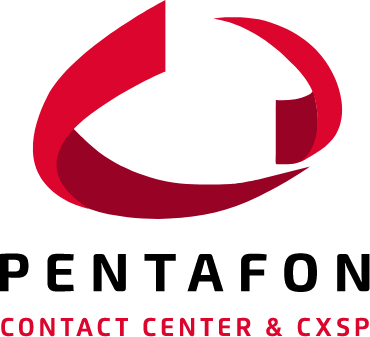Setting Up a Modern Contact Center in Mexico: Alternatives to White-Label
The contact center industry in Mexico has undergone a significant transformation in recent years, adapting to new technologies and operational models. According to the Sixth National Contact Center Study, 83% of companies have implemented remote work models, while 64% reported an increase in campaigns focused on customer service, promotions, and sales.
Additionally, 40% of these contact centers provide services to foreign markets, including regions such as Latin America, North America, Europe, and Asia-Pacific.
Traditionally, many businesses have opted for the white-label model to operate their contact centers. However, this approach comes with limitations in terms of quality control and service customization.
In this context, exploring alternatives to the white-label model is crucial for establishing a contact center in Mexico that delivers personalized services while maintaining high-quality standards.
Key limitations of the white-label model in contact center operations
1. Lack of brand differentiation
With a white-label model, services are standardized and do not reflect the identity or values of the contracting company. This can impact customer experience and reduce brand loyalty, as consumers may perceive the service as generic or impersonal.
2. Limited control over service quality
Since the company does not directly operate the contact center, it loses control over service standards, agent training, and customer interaction personalization. This can lead to inconsistencies in service quality and negatively affect the company’s reputation.
3. Rigid process customization
White-label solutions typically offer predefined services, limiting the ability to adapt workflows, performance metrics, or communication strategies based on the company’s specific needs. This reduces flexibility for innovation and process optimization.
4. Limited access to advanced technologies
White-label service providers generally use standard platforms, restricting the integration of specialized tools such as artificial intelligence, advanced analytics, or process automation. This limits the company's ability to enhance operational efficiency and deliver more sophisticated customer experiences.
5. Dependence on the provider
Under a white-label model, the company is subject to the provider’s policies, response times, and capabilities. This can cause issues if the provider fails to meet expected service levels or if the company needs to make quick operational changes.
6. Long-Term costs without direct return on investment (ROI)
While the white-label model may seem like a cost-effective option in the short term, over time, service costs, lack of control, and limited customization can lead to missed optimization and scalability opportunities. Additionally, efficiency and innovation benefits remain with the provider rather than the contracting company.

White-Label alternatives in contact centers
Instead of the white-label model, contact centers are adopting more modern and flexible approaches that offer greater control, differentiation, and operational efficiency. Some of the most widely used models include:
1. Build-operate-transfer (BOT) model
Foreign companies set up operations in Mexico with the help of a local partner who builds and operates the contact center before fully transferring it to the contracting company.
Key Benefit: Minimizes initial risks, optimizes processes, and ensures a structured transition.
2. Contact center as a service (CCaaS)
A cloud-based model that provides scalable contact center solutions without the need for physical infrastructure.
Key Benefit: Reduces operating costs, enhances flexibility, and enables integration with advanced technologies like AI and real-time data analytics.
3. Outsourcing with smart nearshoring
Instead of outsourcing to a traditional white-label provider, companies hire BPO services in nearshore markets like Mexico, where competitive costs are combined with highly skilled talent and advanced technology.
Key Benefit: Better cultural and operational alignment, cost reduction without compromising quality, and access to bilingual talent.
4. In-House hybrid model
Combines internal infrastructure with the strategic outsourcing of specific processes, such as technical support or sales, using specialized providers.
Key Benefit: Greater control over operations, enhanced customer experience, and the ability to scale as needed.
5. AI-Driven digital contact centers with automation
Implementation of artificial intelligence solutions, chatbots, and virtual assistants to reduce operational workload and improve efficiency.
Key Benefit: Lower costs, faster response times, and a better customer experience.
These models allow companies to avoid the limitations of the white-label approach, offering greater customization, control, and long-term profitability in contact center operations.
How to establish your contact center in Mexico without the outdated white-label model
Setting up a contact center in Mexico without relying on the traditional white-label model is a strategy that enables businesses to maintain full control over their operations, strengthen their brand identity, and deliver personalized customer experiences.
Below are key steps backed by concrete data and reliable sources to achieve this goal in 2025:
1. Assess the current contact center landscape in Mexico
The Mexican contact center market has seen significant transformations in recent years. According to the Sixth National Contact Center Study:
- 83% of companies have implemented remote work models.
- 64% have increased their customer service, promotion, and sales campaigns.
- 58% operate with hybrid infrastructure (combining on-site facilities and cloud solutions), while 14% have fully migrated to the cloud.
2. Define goals and strategy
It is essential to establish clear objectives for the contact center, aligned with the company's vision and mission. This includes determining the services to be offered, the communication channels to be used, and key performance metrics. A well-defined strategy will facilitate decision-making and effective implementation.
3. Choose the right location and talent
Mexico offers a strategic location with access to a bilingual and skilled workforce. Cities such as Mexico City, Guadalajara, and Monterrey are known for their infrastructure and talent in the contact center sector. The availability of professionals with customer service skills and multilingual proficiency is a key success factor.

4. Implement advanced technology
The adoption of modern technologies is crucial. Currently:
- 58% of companies in Mexico operate with hybrid infrastructures.
- 73% are considering migrating to the cloud due to its flexibility and scalability benefits.
- AI and automation integration significantly enhance efficiency and customer experience.
5. Develop a hybrid model
The hybrid model, which combines on-site and remote operations, has become a dominant trend. This approach allows companies to adapt to changing market demands and employee preferences while optimizing costs and improving job satisfaction.
6. Invest in employee training and development
Continuous training is essential to ensure high-quality service. Training programs in communication skills, technology tools, and problem-solving contribute to improved efficiency and customer satisfaction.
7. Monitor and continuously improve
Establishing monitoring and evaluation systems helps identify areas for improvement and ensure compliance with set objectives. Analyzing key metrics and gathering regular feedback are fundamental for the evolution and sustained success of the contact center.
By following these steps, companies can establish contact centers in Mexico that not only avoid the limitations of the white-label model but also leverage the opportunities that the Mexican market offers in 2025.
Contact Us


